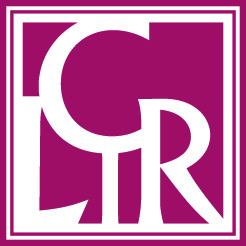
Washington, DC (PRWEB) July 01, 2013
A new report, ready for The Andrew W. Mellon Foundation and published by the Council on Library and Information Sources (CLIR), describes the current approaches of 11 art museums to the use of photos from their collections, when the underlying operates are in the public domain.

The report, Pictures of Performs of Art in Museum Collections: The Experience of Open Access, was written by Kristin Kelly. Ms. Kelly, a freelance museum professional and writer, spent nine years as the manager of administration at the J. Paul Getty Museum, and nine years overseeing public programming and communications at the Getty Conservation Institute.

Art museums have lengthy controlled the images of objects in their collections by charging costs for their use. In current years, nonetheless, numerous art museums in the United States and United Kingdom have adopted policies permitting much more open access to these photos. The author surveyed employees at the British Museum, Indianapolis Museum of Art, J. Paul Getty Museum, Los Angeles County Museum of Art, Metropolitan Museum of Art, Morgan Library and Museum, National Gallery of Art, Victoria and Albert Museum, Walters Art Museum, Yale Center for British Art, and Yale University Art Gallery about their open-access policies.

The author identified that each and every of the museums studied has taken a slightly various method to creating images of the operates in its collection much more openly accessible. Some have put higher-resolution digital files of functions on the internet for use by any individual for any goal. Other folks have established a charge and totally free system that considers no matter whether use is for industrial use or for promotion of scholarship. Still others evaluate every request on its person merits. By presenting the believed processes and strategies utilized in these institutions, the report aims to inform the decision creating of other museums that are contemplating open access to images in their collections.

Amongst the report’s key findings:

Delivering open access is a mission-driven decision. Each and every staff member of each and every museum in the study emphasized that museums exist to educate and serve their audiences, and that delivering access to photos of operates in their collection is element of their institutional mission.

Different museums look at open access in different approaches. Some museums have the technological, financial, and human sources to supply totally free, immediate, higher-quality downloads of collection photos, although other people are taking the approach in steps as resources and time permit.

Internal approach is essential. The choice to give open access to pictures can have an effect on many folks in a museum. Each and every is a stakeholder in the method, and every requirements to understand and participate in the decision generating. Senior-level commitment is critical.

Loss of handle fades as a concern. While a lot of museum staff had legitimate inquiries and issues about providing open access to photos of functions in their collection, their worst fears have not been realized. Numerous of the museums are component of the Google Art Project, or have contributed to Wikimedia or other social media internet sites, which implies that pictures of a lot of of their operates are currently obtainable on the internet.

Technology matters. Although a decision to supply open access to images is not primarily based solely on the accessible technologies, it is critical to have clean and total metadata, an successful digital asset management method, typically strong museum technology, and the employees to handle all of these systems.

Income matters significantly less than many institutions believe it does. Whilst income remains a subject of interest to many museums, employees normally acknowledge that their desire to give details about the collection in as open a manner as achievable trumps income concerns.

Modify is excellent. No museum that has made the transition to open access for the pictures in its collection would return to its preceding strategy.

The report’s findings are compelling, mentioned CLIR President Chuck Henry. From the interviews with employees and analysis of data, crucial modifications over time can be noted in the museum neighborhood. These findings, among numerous other insights supplied in the report, are of considerable value in helping us refine our techniques of access moving forward.

Mari

